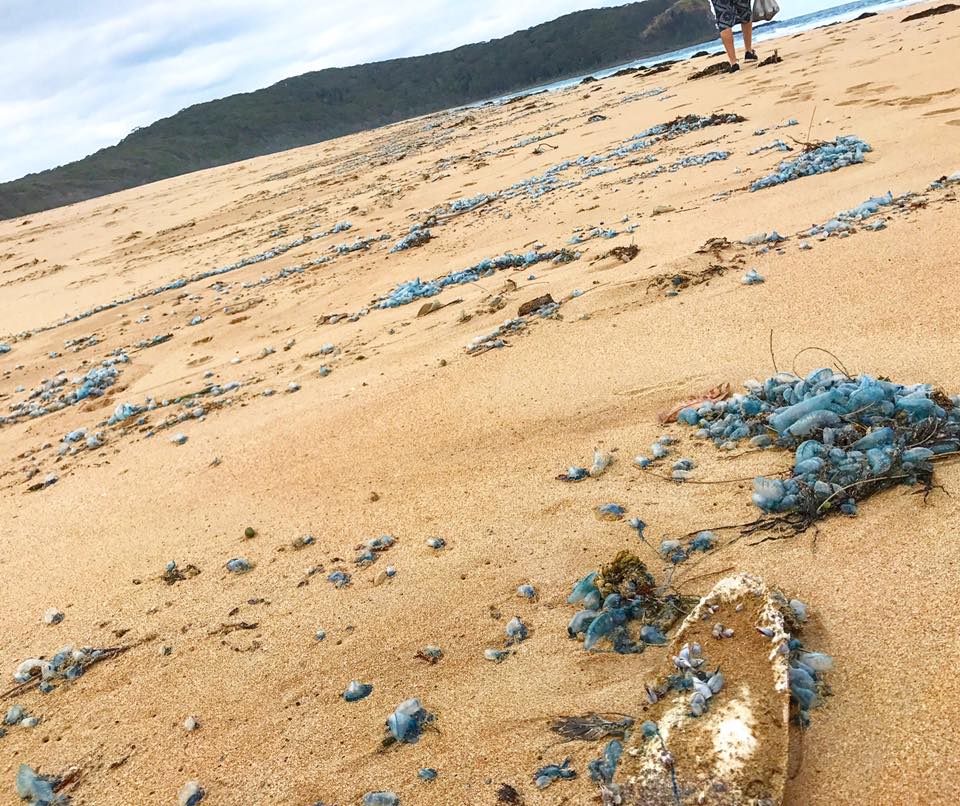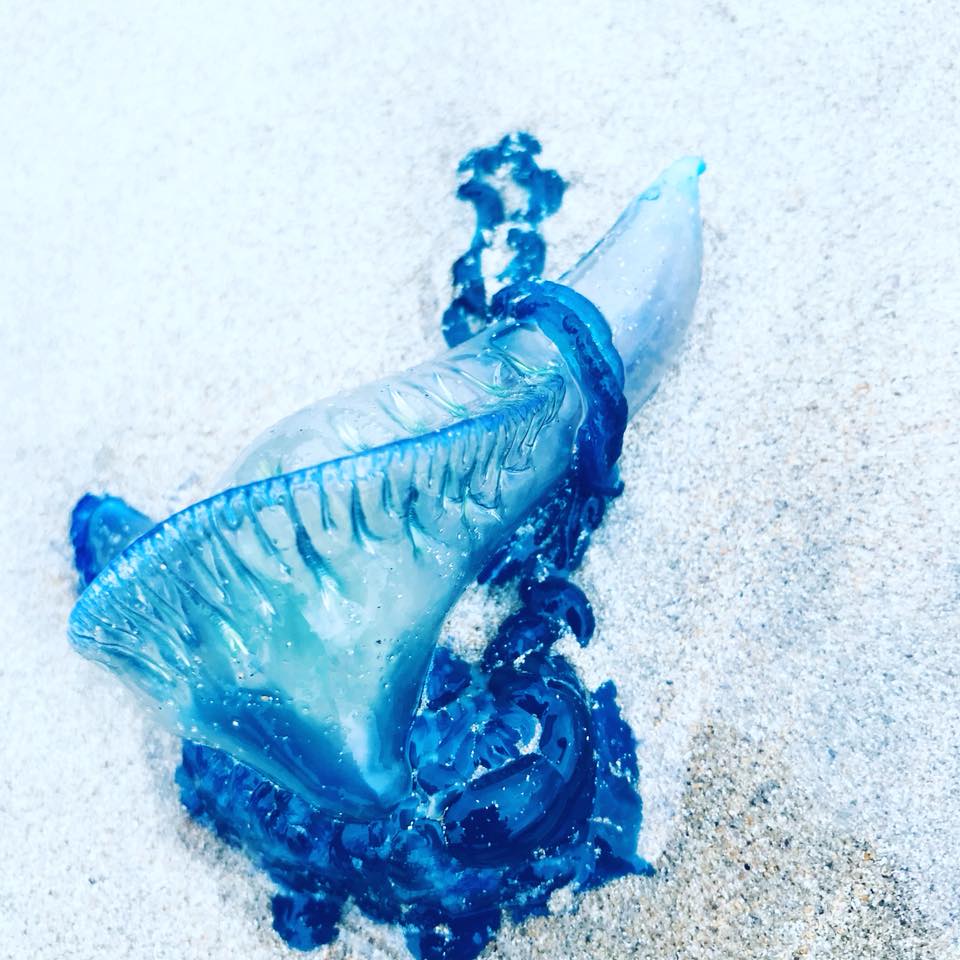Locals and visitors have been returning beaches along the Eurobodalla and Bega Valley coastline, the chill of winter replaced with the temptation of a swim under big, bright, blue skies.
But that springtime enthusiasm has been tempered on some beaches with the mass arrival of familiar but alien looking creatures – Bluebottles.
Not one creature but many, these duel sex visitors to Far South Coast beaches are a collegiate group each with a job to do before being blown ashore.
“I love bluebottles, they’re awesome,” says Kerryn Wood, Manager of the Sapphire Coast Marine Discovery Centre in Eden.
“They’re actually a colony of several animals, all with specialised functions – feeding, catching prey, and reproduction.
“Fascinating!” Kerryn says.
According to the Australian Museum, the Bluebottle is a colony of four kinds of highly modified individuals known as zooids, and come from the same family of life that includes coral and sea anemones.
“The zooids are dependent on one another for survival.
“The float (pneumatophore) is a single individual and supports the rest of the colony.
“The tentacles (dactylozooids) are polyps concerned with the detection and capture of food and convey their prey to the digestive polyps (gastrozooids).
“Reproduction is carried out by the gonozooids, another type of polyp,” The Museum says.
Generally speaking, northerly winds bring Bluebottles onto local beaches.
“There have also been some pretty big seas lately,” Ms Wood says.
The Bluebottles famous float can grow to over 15cm, it’s job is to sail the colony across the ocean surface capturing the breeze with its aerodynamic shape. A degree of muscular contraction in its crest gives the Bluebottle a sense and skill similar to a holidaying windsurfer.
Local surfboat crews training for January’s George Bass Surfboat Marathon are reporting large “schools” of Bluebottles bobbing about at sea.
“The float may project either to the left or to the right; the left-handed forms sail to the right of the wind and vice versa,” The Australian Museum explains.
“Thus, if the sailing angle of one form leads to its stranding on the shore, the others sailing to the opposite side of the wind may escape.”
A neat survival trick that maintains the population even when Far South Coast beaches are blanketed in dried and popping specimens.
Food and reproduction drive life and Bluebottles have some impressive tools to call on.
Their stinging tentacles drift downwind for up to one metre capturing food in their wake, responding swiftly to the presence of food, they twist and tangle prey, and “become all mouth” to digest their meal.
A range of enzymes are deployed to break down proteins, carbs, and fats across a menu of small crustaceans and surface plankton.
Reproduction is another impressive Bluebottle trick that helps it’s species survive on the high-seas.
Bluebottles are hermaphrodites, they carry female and male parts.
“Awesome, I love that so many marine creatures are hermaphrodites,” Ms Wood says.
“And sometimes they’ll wash up on the beach with a variety of other really beautiful ‘blue’ animals like Glacus atlanticus or the Blue Sea Dragon – also hermaphrodites.
“The Glaucus atlanticus actually eat blue bottles and ‘steal’ their poison, making them even more poisonous!” Ms Wood says.
All this is very interesting but from a human perspective, avoiding the stingers and knowing what to do if stung is front of mind during a day at the beach.
Andrew Edmunds from the Far South Coast Surf Lifesaving Association says northeasterly winds and swells in particular bring Bluebottles on to beaches between Batemans Bay and Eden.
“Avoiding north-east facing beaches in those conditions might help families dodge Bluebottles,” Mr Edmunds says.
“The best treatment for a sting is hot water, a shower as hot as you can without burning does the trick.
“And if hot water isn’t available ice is a good alternative in relieving the pain after you have washed the tentacles away,” Mr Edmunds advises.
“Swimming at a patrolled beach this summer will ensure that first aid is close at hand from lifesavers.”
And be aware beachcombers, as thousands of Bluebottles lay shipwrecked on local beaches the toxic mixture they use to immobilise and digest their prey is still active and can sting you, however the contractions that trap their marine victims becomes inactive.
Bluebottles are awesome, the sting they can inject into a day at the beach instinctively demands our respect, but so to should their survival skills.
*Become a member of About Regional and support local news and stories, thank you to the Bega Valley Regional Learning Centre, Linda Albertson, Julia Stiles, Ali Oakley, Rosemary Lord, and Simon Marnie.
*Large elements of this article originally appeared on Riot ACT.










